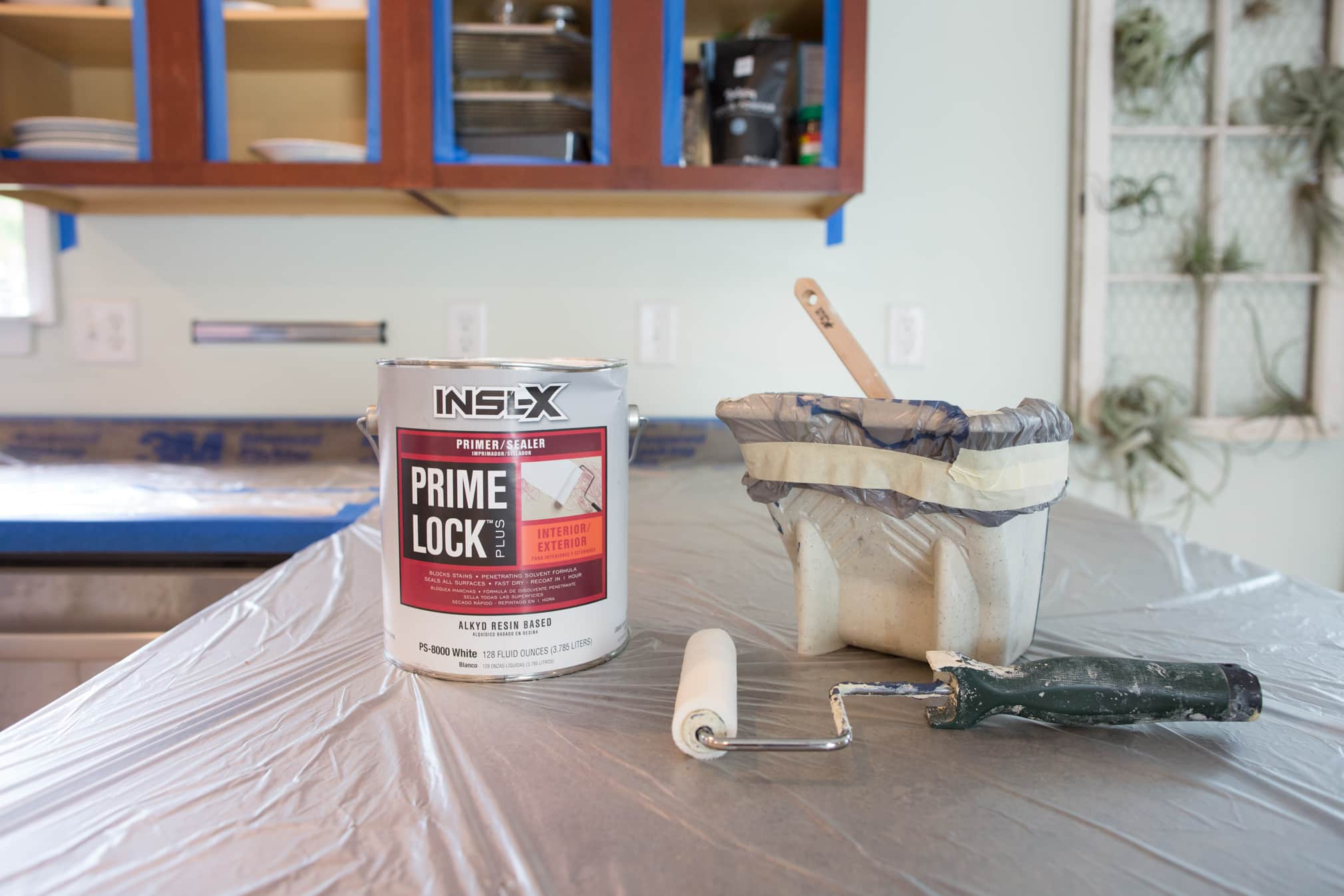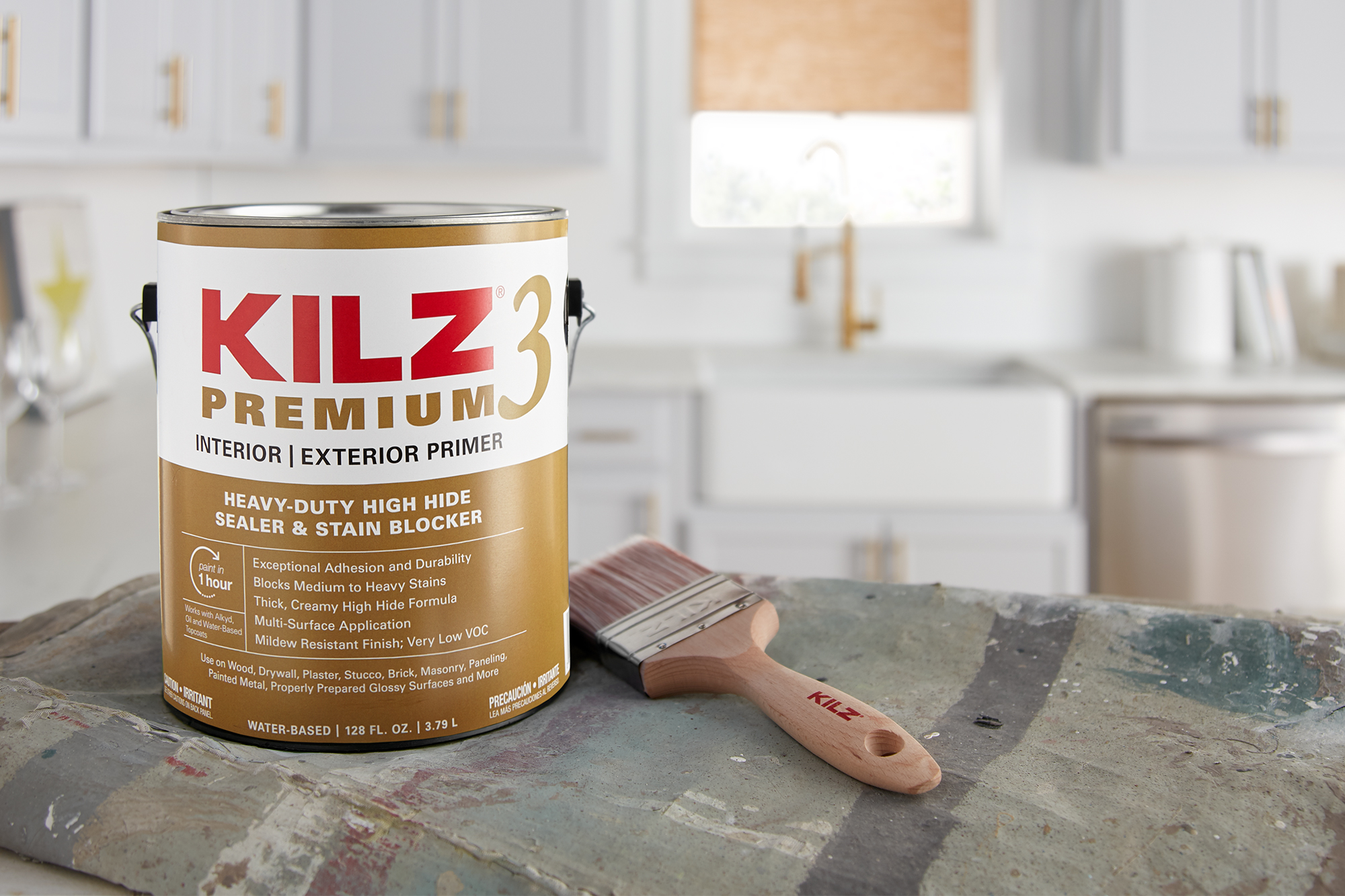Top 3 Bonding Primers for Kitchen Cabinets

Choosing the right bonding primer is crucial for a long-lasting, beautiful kitchen cabinet makeover. A good primer ensures excellent adhesion of your paint, protecting your cabinets from moisture and wear, and providing a smooth, even surface for a professional finish. This guide focuses on three top-performing bonding primers, comparing their properties to help you make an informed decision.
Comparison of Top Bonding Primers
The following table compares three best-selling bonding primers for kitchen cabinets, considering their chemical composition, drying time, application method, price range, and user reviews. Remember, prices can fluctuate, so always check current pricing at your local hardware store or online retailer.
| Primer Name | Key Features | Price Range | User Reviews Summary |
|---|---|---|---|
| KILZ Premium Primer | Excellent adhesion, seals stains and odors, water-based, low VOC, fast drying time. | $20 – $40 per gallon | Generally positive reviews, praised for its effectiveness in covering stains and providing a smooth finish. Some users report a slight odor. |
| Zinsser BIN Advanced Multi-Purpose Primer | Oil-based, strong adhesion, seals stains and odors effectively, excellent for knotty wood and porous surfaces. | $25 – $45 per gallon | Highly rated for its stain-blocking capabilities, particularly on challenging surfaces. Some users find the oil-based formula more difficult to clean up. |
| Rust-Oleum Painter’s Touch 2X Ultra Cover Primer | Water-based, fast drying, excellent coverage, affordable, suitable for various surfaces. | $15 – $30 per gallon | Popular choice for its affordability and ease of use. Some users report needing multiple coats for optimal coverage on darker surfaces. |
Primer Suitability for Different Cabinet Materials
Understanding the suitability of each primer for various cabinet materials is vital for achieving optimal results. The wrong primer can lead to peeling, chipping, or poor adhesion.
Best bonding primer for kitchen cabinets – Here’s a breakdown of each primer’s compatibility:
- KILZ Premium Primer: Suitable for wood, melamine, and laminate. Its water-based formula is generally less harsh on these surfaces.
- Zinsser BIN Advanced Multi-Purpose Primer: Excellent for wood, especially knotty pine or other porous woods. It offers superior adhesion on these challenging surfaces. Use with caution on melamine and laminate, as the oil-based formula might not be compatible with all finishes. A test patch is highly recommended.
- Rust-Oleum Painter’s Touch 2X Ultra Cover Primer: Works well on wood, melamine, and laminate. Its water-based formula makes it easy to apply and clean up.
Surface Preparation Before Primer Application
Thorough surface preparation is paramount for a professional-looking finish. Skipping this step can lead to a subpar result. Each primer requires a slightly different preparation process.
Here’s a step-by-step guide for each primer:
- KILZ Premium Primer:
- Clean cabinets thoroughly with a degreaser to remove grease and grime.
- Lightly sand with fine-grit sandpaper (180-220 grit) to create a slightly rough surface for better adhesion.
- Wipe clean with a tack cloth to remove dust.
- Apply primer with a brush, roller, or sprayer according to manufacturer instructions.
- Zinsser BIN Advanced Multi-Purpose Primer:
- Clean cabinets thoroughly with a solvent-based cleaner to remove grease and grime.
- Sand thoroughly, especially on knotty wood, to smooth the surface and ensure good adhesion.
- Wipe clean with a tack cloth.
- Apply primer with a brush or roller, ensuring even coverage.
- Rust-Oleum Painter’s Touch 2X Ultra Cover Primer:
- Clean cabinets with soap and water, ensuring they are completely dry before proceeding.
- Lightly sand with fine-grit sandpaper (180-220 grit) for better adhesion.
- Wipe clean with a tack cloth.
- Apply primer using a brush, roller, or sprayer. Multiple coats may be necessary for full coverage.
Factors to Consider When Choosing a Bonding Primer

Choosing the right bonding primer for your kitchen cabinets is crucial for a long-lasting, beautiful finish. A poorly chosen primer can lead to peeling paint, uneven color, and ultimately, a frustrating DIY project. Making an informed decision requires understanding several key factors.
Key Factors Influencing Bonding Primer Selection, Best bonding primer for kitchen cabinets
The selection of a suitable bonding primer hinges on several critical characteristics that directly impact the final result and longevity of your kitchen cabinet makeover. Consider these factors carefully before making your purchase.
- Adhesion Strength: A strong bond between the primer and the cabinet surface is paramount. Look for primers specifically formulated for adhesion to various substrates, including wood, melamine, and even previously painted surfaces. Strong adhesion prevents peeling and chipping, ensuring a durable finish.
- Stain-Blocking Properties: Kitchen cabinets often have stains, water marks, or imperfections. A good bonding primer should effectively seal these blemishes, preventing them from bleeding through the topcoat. This is especially important for darker stains or water damage.
- Durability: The primer should be resistant to moisture, temperature fluctuations, and everyday wear and tear. Kitchen environments are particularly demanding, with exposure to grease, steam, and cleaning agents. A durable primer will protect your cabinets and extend the life of the finish.
- Drying Time: Faster drying times can significantly reduce project completion time. However, ensure that the chosen primer allows for sufficient drying before applying subsequent coats to avoid issues like bubbling or uneven application.
Practical Tips for Proper Adhesion and Application
Proper application techniques are just as important as choosing the right primer. Following these steps will ensure a smooth, even finish and prevent common problems.
- Surface Preparation: Thoroughly clean the cabinet surfaces to remove grease, dirt, and loose paint. Sanding may be necessary to create a slightly rough surface for better adhesion. This step is non-negotiable for optimal bonding.
- Thin Coats: Apply multiple thin coats rather than one thick coat. This allows for better penetration and prevents runs or drips. Allow each coat to dry completely before applying the next.
- Even Application: Use a high-quality brush or roller to ensure even coverage. Avoid leaving any areas unprimed, as this can lead to adhesion problems later on.
- Proper Ventilation: Work in a well-ventilated area to allow the primer to dry properly and to avoid inhaling harmful fumes. This is crucial for both your health and the quality of the finish.
Long-Term Performance Under Various Conditions
The longevity of a bonding primer can vary depending on environmental conditions. This table provides a general comparison of expected lifespan. These are estimates and actual lifespan can vary based on the specific primer, application, and environmental factors.
| Condition | Expected Lifespan (Years) | Example |
|---|---|---|
| Normal Indoor Conditions (moderate temperature, humidity) | 5-10+ | A well-ventilated kitchen with consistent temperature and humidity. |
| High Humidity (coastal areas, poorly ventilated kitchens) | 3-7 | A kitchen near the ocean or with frequent steam exposure from cooking. |
| Extreme Temperature Fluctuations | 3-5 | A kitchen with direct sunlight exposure or significant temperature variations. |
Alternatives to Traditional Bonding Primers & Application Techniques: Best Bonding Primer For Kitchen Cabinets

So, you’re ready to revamp your kitchen cabinets, eh? Getting that perfect paint finish is all about prep, and while a bonding primer is a solid choice, there are other ways to skin this cat. Let’s explore some alternatives and the best ways to apply them, Makassar style!
Paint and Primer Combinations
Using a paint and primer in one product offers a convenient shortcut. These combo products are designed to save time and effort by eliminating a separate priming step. This is especially appealing for smaller projects or those who prefer a quicker turnaround.
- Pros: Saves time and reduces the number of coats needed. Often easier to apply than a primer and paint separately.
- Cons: May not offer the same level of adhesion or stain-blocking power as a dedicated bonding primer, especially on highly porous or problematic surfaces. Might require more coats for full coverage and optimal durability.
Specialty Primers
Beyond standard bonding primers, there are primers formulated for specific needs, such as oil-based primers for better adhesion to glossy surfaces or shellac-based primers for superior stain blocking. Choosing the right specialty primer depends on the condition of your cabinets. For example, if your cabinets have significant water damage, a specialized primer designed for moisture control might be necessary.
- Pros: Addresses specific surface issues, providing superior adhesion or stain blocking as needed. Often offers better long-term protection against moisture or other damage.
- Cons: Can be more expensive than standard bonding primers. Requires more specific knowledge of the cabinet’s condition and the type of paint being used.
Application Techniques
Applying the primer correctly is crucial for a smooth, even finish. Let’s check out the popular methods:
Brushing
Brushing allows for precise application, especially in corners and hard-to-reach areas. It’s a good option for smaller projects or detailed work. However, it can be more time-consuming and may leave brush strokes if not applied carefully.
- Pros: Precise application, ideal for detailed work and corners. Good control over primer application.
- Cons: Time-consuming, can leave brush strokes if not applied smoothly, requires more effort.
Rolling
Rolling is efficient for larger surfaces, providing a relatively even coat quickly. It’s a good choice for larger kitchen cabinet projects. However, it can be challenging to get into tight spaces and might leave a slightly textured finish if not done properly.
- Pros: Fast and efficient for large surfaces. Provides a relatively even coat.
- Cons: Can be difficult to apply in corners and tight spaces. May leave a slightly textured finish if not done with care.
Spraying
Spraying offers the fastest and most even application, minimizing brush strokes and ensuring consistent coverage. It’s ideal for large projects where speed and efficiency are priorities. However, it requires specialized equipment and proper safety precautions. Overspray can also be a problem.
- Pros: Fastest and most even application. Minimizes brush strokes.
- Cons: Requires specialized equipment. Needs proper safety precautions to avoid overspray and inhalation of fumes.
Choosing the Right Bonding Primer (Revised)
Transforming your kitchen cabinets involves careful planning. Understanding your cabinets’ current condition is key. Are they glossy, porous, or stained? This determines the type of primer needed. For instance, glossy surfaces benefit from an oil-based primer to ensure the paint adheres properly. Porous wood might require a primer designed to seal and prevent excessive paint absorption. If there are stubborn stains, a stain-blocking primer is essential. Consider the type of paint you’ll use – some primers are better suited for certain paint types. Finally, think about your budget and the time you’re willing to invest. A high-quality primer might be a little pricier, but it will pay off in the long run with a durable and beautiful finish.
